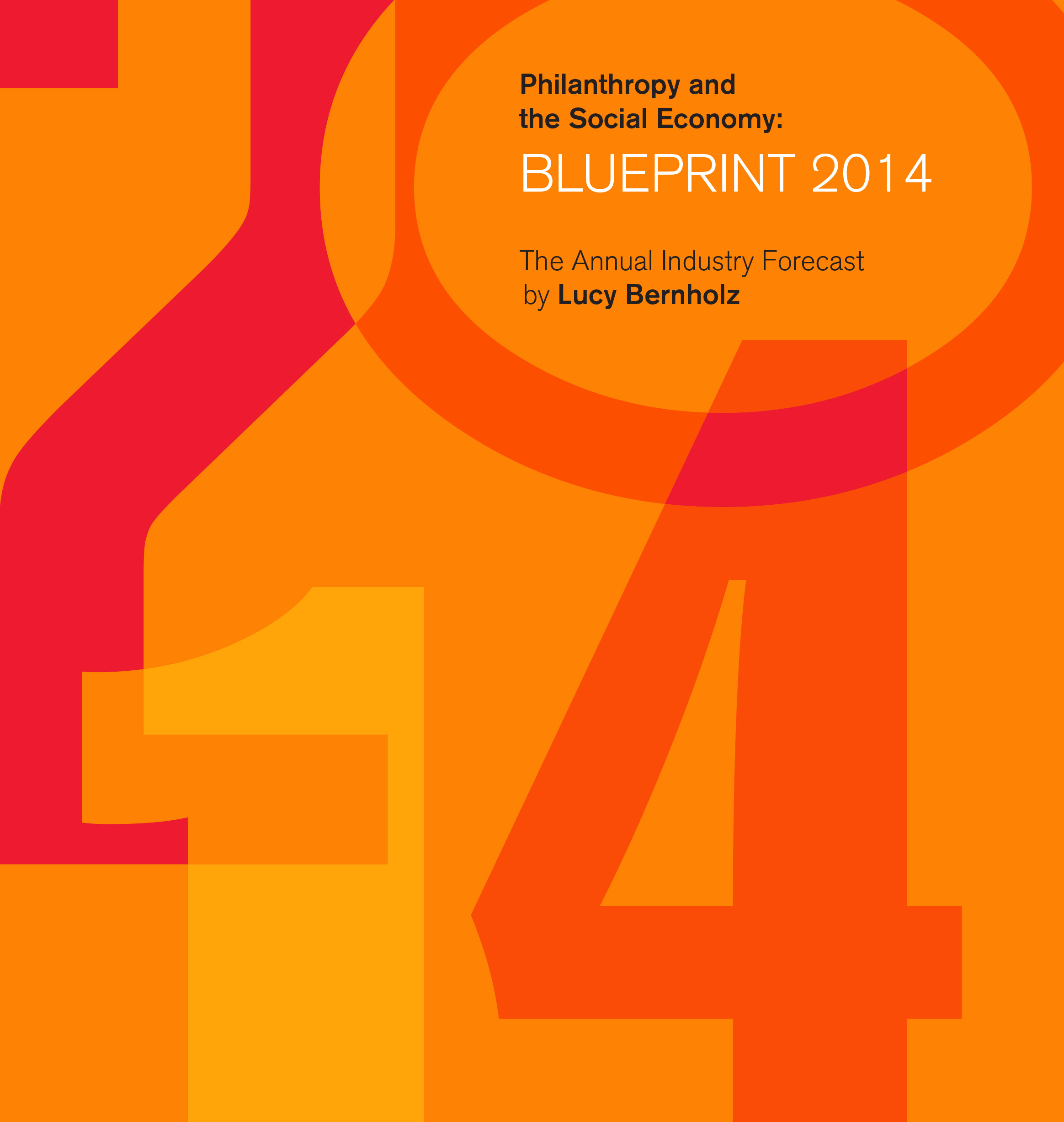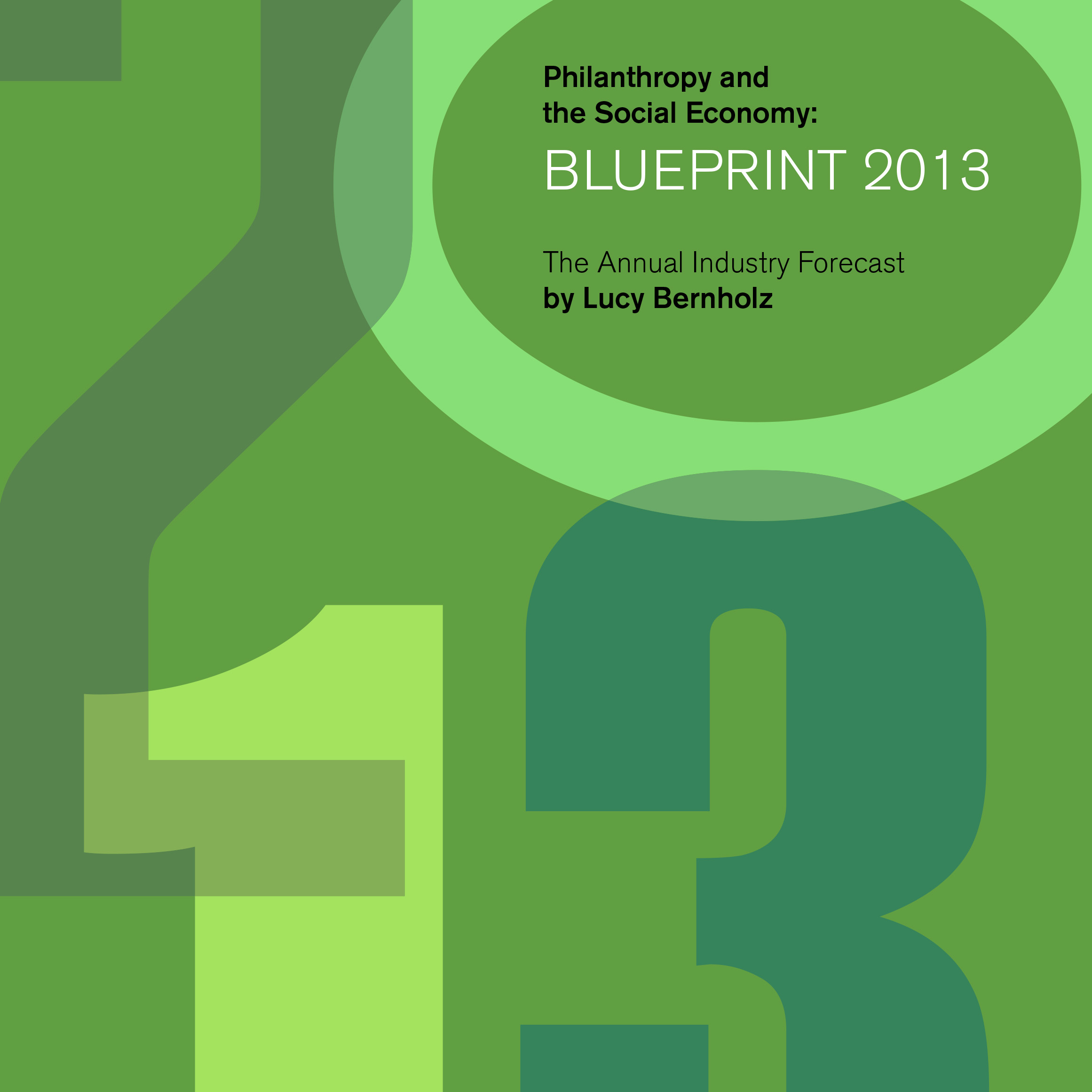Why It Matters that the Social Economy is Going Big on Data
GrantCraft has formed a partnership with leading philanthropy scholar-blogger-tweeter Lucy Bernholz to make her annual industry forecast, Philanthropy and the Social Economy: Blueprint 2013, available at no charge as an exclusive benefit for registered users of GrantCraft. We are delighted to have Mari Kuraishi as GrantCraft's inaugural guest blogger and one of several who will provide commentary on the Blueprint's themes in an ongoing web dialogue this year with Lucy's blog, Philanthropy 2173, and the Foundation Center's PhilanTopic.
This year's Blueprint takes two important steps toward redefining the boundaries of the discourse on how we maximize the public good. First, Lucy creates an inclusive space — calling it the social economy, as a "way of thinking about all the tools we use to apply our private resources for public good." This is an important point because several independent developments are taking place in the landscape to create one single mutually interactive space. Past editions of the Blueprint have forcefully argued that the emergence of social investing will upend the dynamics of capital access for enterprises engaged in the public good. The flows of money are smaller still than philanthropy (estimated at $54 billion in assets in 2010 report on impact investing, in contrast to the $300 billion a year for philanthropy), but it has already fundamentally shifted the perception that only nonprofit entities can focus on the public good.
Simultaneously, fiscal pressures have challenged the sanctity of the deductibility of donations. Even if the law is not changed in the current fiscal cliff discussions, I have no doubt it will come under scrutiny again precisely because the very concept of segmentation and differential treatment of capital flows for public good is likely to feel increasingly archaic.
Second, Lucy points to the importance of foundations "going big on data." Big data was a business buzzword in 2012, and philanthropy and the nonprofit sector are playing catch up. But why is this big news? Foundations embracing big data will allow for better analysis of philanthropic flows and dynamics. But as much as this delights us geeks, the real significance of this shift lies in the fact that it allows for private data to be integrated with public data. It's big because the commercial and public sectors have already taken huge steps to go big on data, and in the context of the newly defined social economy, the fact that foundations are now following suit can actually facilitate greater cohesion and integrity within the social sector.
Why do I say this? To argue by analogy, think of what happened in 2012 to campaign strategy, tactics, and science as a result of the single voter database that was created from the previously siloed voter databases belonging to the unions and the get-out-the-vote organizations of the world. It wasn't just that the integrated data allowed for cleaner data and reduced duplication and hassle for both voters and campaigners. It was that with a common database, you could liberate people to take incredibly efficient, targeted, but decentralized action far more easily — right down to the casual supporter who had two hours of phone-banking time to contribute.
This is what we at GlobalGiving have in mind in partnering with GuideStar, the Foundation Center, and TechSoup Global to create a single merged database of nonprofits worldwide, code named BRIDGE.
That's why I think it's so important that foundations and the nonprofit sector go big on data. Because they might just be bringing some of the last pieces of the puzzle to the game. What are some of the opportunities you can see in the integrated big data picture?



